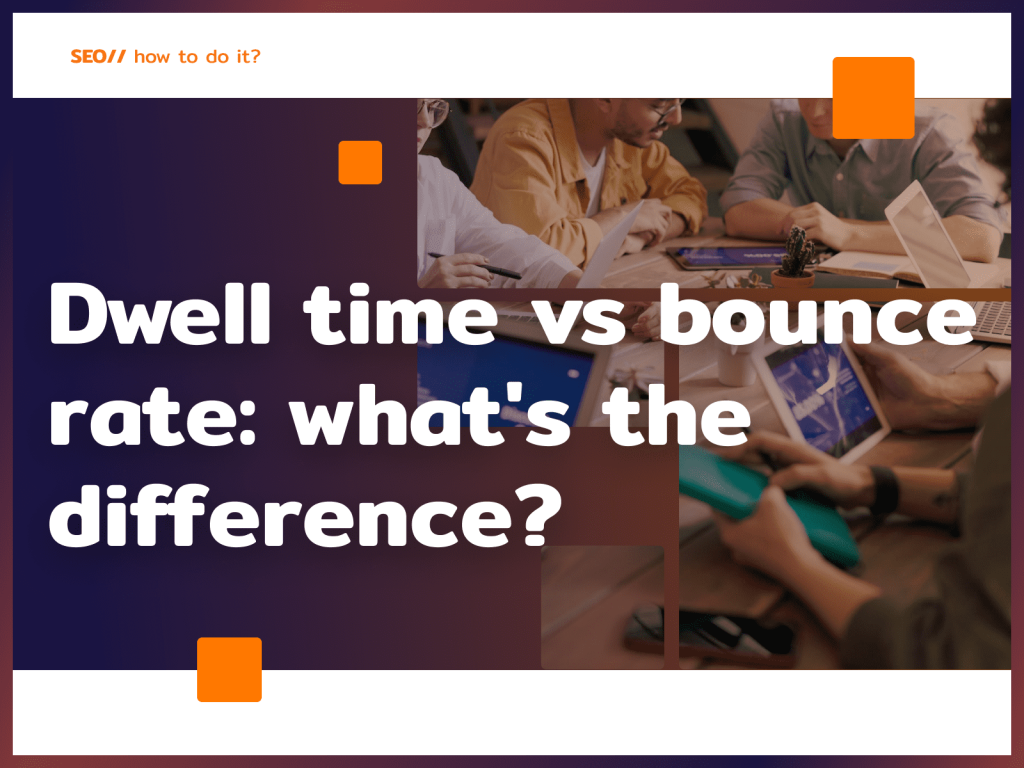It’s hard to have effective positioning without data analysis, so it’s worth using indicators. In this article you will find a comparison: dwell time vs bounce rate. How are they different? What will you learn through them? Keep reading to learn how to analyze your site’s traffic even better.
Do you want someone to create an A to Z strategy for you and handle its implementation? I can help you – contact me!
Dwell time: what is the indicator?
Dwell time is a term that refers to the amount of time a user spends on a particular website after accessing it from search results. In other words, it is the time that elapses from the moment a user enters the site until he or she returns to the search results or goes to another page. Dwell time is important from an SEO and marketing perspective because a long dwell time indicates that the site’s content is valuable and provides the user with relevant information. An increase in dwell time can positively affect a site’s position in search results and the overall quality of the user experience. If dwell time marketing is falling, it is worth focusing on improving the quality of the site, and above all, the relevance of the content to keywords, so that the user finds what they are looking for.

Do you want to increase your profits with SEO?
I will prepare an action strategy and, together with my team, implement it for you.
Bounce rate: known rejection rate
Bounce rate, on the other hand, refers to the percentage of users who leave a site after entering it without interacting with it for any lengthy period of time. In other words, it’s an indicator that measures the number of sessions in which a user visits just one subpage, compared to the total number of hits on the site. A high bounce rate can indicate that a site’s content does not meet users’ expectations or is unattractive, which can negatively affect search engine rankings and the effectiveness of marketing efforts.
Dwell Time vs Bounce Rate: key differences
- Time on page vs. number of pages visited: dwell time measures how much time a user spends on a page, while bounce rate examines the percentage of users who leave a site after seeing just one subpage.
- Content vs. quality: dwell time focuses on the quality of content and user engagement, while bounce rate indicates potential problems with site appeal or inadequate content quality.
- Positive vs. negative Indicators: an increase in dwell time is usually seen as a positive signal, indicating user satisfaction. In the case of bounce rate, it’s better if it’s lower, because that suggests that users are finding something of interest on the site.
Ready to grow?
Dwell Time vs Bounce Rate: which is more important?
Are you optimizing your site and don’t know which indicator is more important? Dwell time SEO and bounce rate SEO do matter, so as usual with SEO the answer is: it depends. Both metrics are geared toward the same goal, which is user engagement and the best possible optimization of the site for keywords. Ultimately, the balance between these metrics is key – compelling content that engages users and encourages interaction will contribute to a sustainable increase in dwell time and a reduction in bounce rate.
Do you want professionals to take care of your website optimization from A to Z? I work with SEO specialists, web developers, copywriters and Google and Facebook Ads specialists – I will help you improve KPIs and increase sales. Call, email or fill out the form!
















